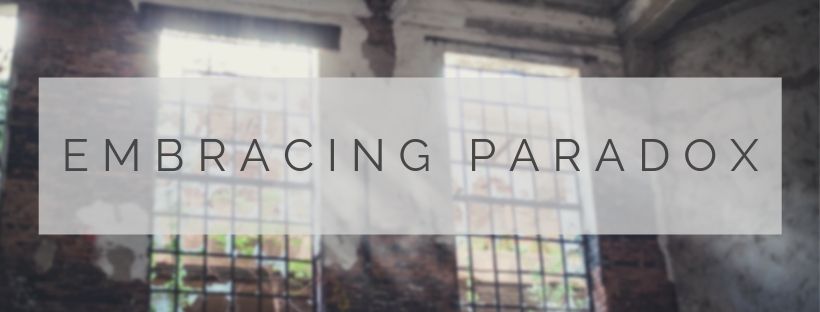Emptiness and Goodness

It’s late August, and I’m in the middle of a make-shift art gallery in a cabin tucked away in an isolated part of Elizabethtown, in the Adirondacks. I’m here to support a new acquaintance, a ceramics artist completing a residency that culminates in a showing of her work. A room divider stands between the gallery space and the venue’s modest kitchen, and the murmur of voices on our side of the room mingles with silverware jangling and metal pots thumping on tables. The gallery is white. Handsome, ambiguous white blocks serve as pedestals for an array of ceramics: cups, mugs, vases, and urns underglazed with sunset colors. I make my way around the room, tracing swirling brushstrokes with my eyes and noting the fading of pale, creamy orange into blushing pink into a moody, robin’s-egg blue. Delicate puffs of painted cloud dust the surface of some. I pick one up, appreciate the even, pleasant weight of it, and point to rust-colored swathes on the surface and ask the potter, “How did you get these marks?”
“It’s from a salt firing,” she says. “We put the salt in, like, near the end, and it adds that color.” She turns and chats with a potential patron.
I nod, pleased. I feel overwhelmed. Socially-anxious. But, that makes it easier to focus on the pottery, to find a tactile, concrete joy in cupping the forms with my palms, in allowing the tiny ridges and whorls in my fingerprints to examine where the smooth glaze meets the exposed, sandy clay body. I feel them. I think about the beauty of the pieces. I think about the thin stoneware walls and the space inside them, about the balance of substance and emptiness.
Earlier in the summer, she told me that before she met people in the area, she would go days without seeing a soul. She became so lonely she drove 45 minutes to a coffee shop just to have the chance to exchange a few words with another human being.
I could sense the balance of fullness and emptiness. Her months of loneliness led up to this crowded, noisy night of supportive people. Her pieces — her babies, she called them — sit with their mouths open heavenward, waiting to be filled and emptied.
While exiting the gallery, I meet a friend of the ceramics artist who’s a writer. “How’s the writing going?” I ask her, studying her outfit: red-orange heels with a flowing floral white dress.
“It’s excruciating,” she says plainly.
I laugh. “But we’re all just chasing those little moments of euphoria. Just trying to make sense of things.”
“I guess,” the writer says.
I ask her what she’s currently working on, and she says, “I’m working on a short story… and I just heard back about this piece I wrote about my mom being assaulted. It didn’t get published, but I’m gonna try again. And I need to finish that short story.” She says it all in a rush, thoughtfully, and then with conviction, to herself, “I’m gonna finish that story.”
I walk back to my car and think to myself, We’re all just doing our best to make sense of pain. We’re all trying to wrestle with the image of God printed on our souls. And we create to explore the intersection of fullness and absence.
I think the unconscious assumption I have to correct most often in my own life is assuming that a sense of fullness is a sign of God’s favor and goodness, and that the pain of emptiness indicates His displeasure and withdrawal. But abundance does not always indicate goodness. Emptiness has a place in existence: it makes space between the matter and allows for the matter to move.
In the beginning, God created the heavens and the earth. The earth was without form and void and darkness was over the face of the deep. And the Spirit of God was hovering over the face of the waters (Genesis 1:1-2, ESV).
And so, God separates light from darkness, water from water, Earth from Seas. Notably, He creates an expanse and names it Heaven, and places waters above it and below it. He creates space. Though we don’t understand the exact metaphysical nature of the interaction of these three spaces, we know that beings have moved between them throughout history. We know God fills and empties spaces according to the goodness of His will — and that the filling and emptying of these spaces is often a painful process. This is true of Mary’s womb and Jesus’s grave. We know Jesus’s birth and resurrection are wonderful events, but the occasion of his entrance into and exit from Earth were excruciating events for him and the people around him. Jesus’s movement into and exit from Mary’s womb caused her pain, and Jesus’s movement through Jerusalem carrying his cross culminated in his spirit leaving his body, and this caused a great deal of pain in the crowd viewing his execution.
Pain and goodness function together in life, like a Möbius strip. They flow in and out of each other, and this is one of the great mysteries in life. If you are feeling empty, in pain, or both, know that the Lord has not withdrawn His love for you. He is moving you through something you cannot understand yet, and the emptiness is a part of life.
